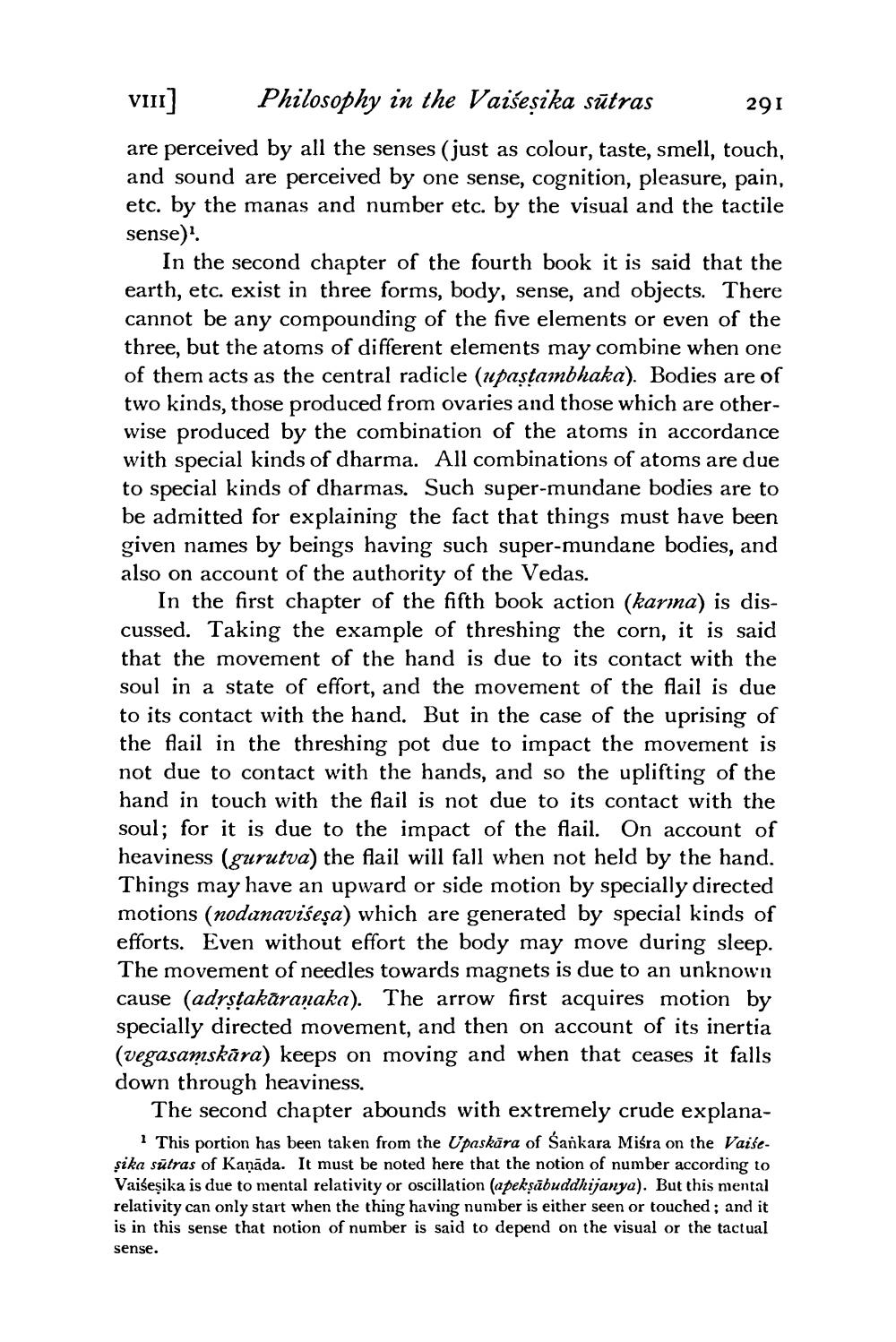________________
291
v11 Philosophy in the Vaiseșika sūtras are perceived by all the senses (just as colour, taste, smell, touch, and sound are perceived by one sense, cognition, pleasure, pain, etc. by the manas and number etc. by the visual and the tactile sense).
In the second chapter of the fourth book it is said that the earth, etc. exist in three forms, body, sense, and objects. There cannot be any compounding of the five elements or even of the three, but the atoms of different elements may combine when one of them acts as the central radicle (upastambhaka). Bodies are of two kinds, those produced from ovaries and those which are otherwise produced by the combination of the atoms in accordance with special kinds of dharma. All combinations of atoms are due to special kinds of dharmas. Such super-mundane bodies are to be admitted for explaining the fact that things must have been given names by beings having such super-mundane bodies, and also on account of the authority of the Vedas.
In the first chapter of the fifth book action (karına) is discussed. Taking the example of threshing the corn, it is said that the movement of the hand is due to its contact with the soul in a state of effort, and the movement of the flail is due to its contact with the hand. But in the case of the uprising of the flail in the threshing pot due to impact the movement is not due to contact with the hands, and so the uplifting of the hand in touch with the flail is not due to its contact with the soul; for it is due to the impact of the flail. On account of heaviness (gurutva) the flail will fall when not held by the hand. Things may have an upward or side motion by specially directed motions (nodanavišeşa) which are generated by special kinds of efforts. Even without effort the body may move during sleep. The movement of needles towards magnets is due to an unknown cause (adrstakaranaka). The arrow first acquires motion by specially directed movement, and then on account of its inertia (vegasamskāra) keeps on moving and when that ceases it falls down through heaviness.
The second chapter abounds with extremely crude explana| This portion has been taken from the Upaskāra of Sankara Miśra on the Vaiseșika sūtras of Kaņāda. It must be noted here that the notion of number according to Vaiseșika is due to mental relativity or oscillation (apekṣībuddhijanya). But this mental relativity can only start when the thing having number is either seen or touched; and it is in this sense that notion of number is said to depend on the visual or the tactual sense.




